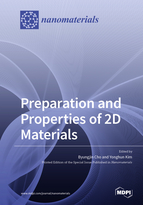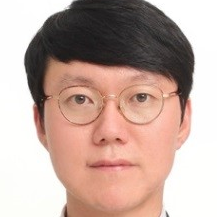Preparation and Properties of 2D Materials
A special issue of Nanomaterials (ISSN 2079-4991).
Deadline for manuscript submissions: closed (10 November 2019) | Viewed by 62971
Special Issue Editors
Interests: 2D based electronics and photonics
Special Issues, Collections and Topics in MDPI journals
Interests: emerging two-dimensional nanomaterials; semiconductor integrated process; neuromorphic synapse; advanced electrical characterization
Special Issues, Collections and Topics in MDPI journals
Special Issue Information
Dear Colleagues,
Since the great success of graphene, atomically thin layered nanomaterials, briefly called 2D materials, have attracted tremendous attention as next-generation materials due to their extraordinary physical properties. Furthermore, van der Waals heterostructured architectures based on a few 2D materials have been proposed as unprecedented platforms for the implementation of versatile devices with a completely novel function or extremely high performance, bringing a paradigm shift in material research and development. Thus, diverse 2D materials beyond existing bulk materials have been widely explored and studied for promising electronic, optoelectronic, sensor, energy, structural, and bio applications.
Especially, this Special Issue highlights the recent advances in the preparation methods of broad range of 2D materials such as graphene, transition metal dichalcogenides (MoS2, WS2, etc.), nitrides (GaN, BN, and Ca2N), organic materials (covalent frame works and 2D polymers), Mxene (Ti3C2, Ta4C3, etc.), and Xene (B, Si, Ge, and Sn) and also device applications enabling exotic physical, chemical, electrical, and optical properties. More specifically, it covers the recent progress of 2D materials on synthesis, device, analysis, and simulations for diverse applications.
This Special Issue is open to original research articles, as well as review papers, that help researchers worldwide understand the latest trend and progress in the 2D material research field.
Prof. Byungjin Cho
Dr. Yonghun Kim
Guest Editors
Manuscript Submission Information
Manuscripts should be submitted online at www.mdpi.com by registering and logging in to this website. Once you are registered, click here to go to the submission form. Manuscripts can be submitted until the deadline. All submissions that pass pre-check are peer-reviewed. Accepted papers will be published continuously in the journal (as soon as accepted) and will be listed together on the special issue website. Research articles, review articles as well as short communications are invited. For planned papers, a title and short abstract (about 100 words) can be sent to the Editorial Office for announcement on this website.
Submitted manuscripts should not have been published previously, nor be under consideration for publication elsewhere (except conference proceedings papers). All manuscripts are thoroughly refereed through a single-blind peer-review process. A guide for authors and other relevant information for submission of manuscripts is available on the Instructions for Authors page. Nanomaterials is an international peer-reviewed open access semimonthly journal published by MDPI.
Please visit the Instructions for Authors page before submitting a manuscript. The Article Processing Charge (APC) for publication in this open access journal is 2900 CHF (Swiss Francs). Submitted papers should be well formatted and use good English. Authors may use MDPI's English editing service prior to publication or during author revisions.
Keywords
- 2D materials
- Graphene
- Transition metal dichalcogenides
- 2D nitrides
- 2D organic materials
- Mxene
- Xene
- Synthesis methods
- Van der Waals heterostructure
- 2D device applications
- Properties
- Analysis
- Simulations








